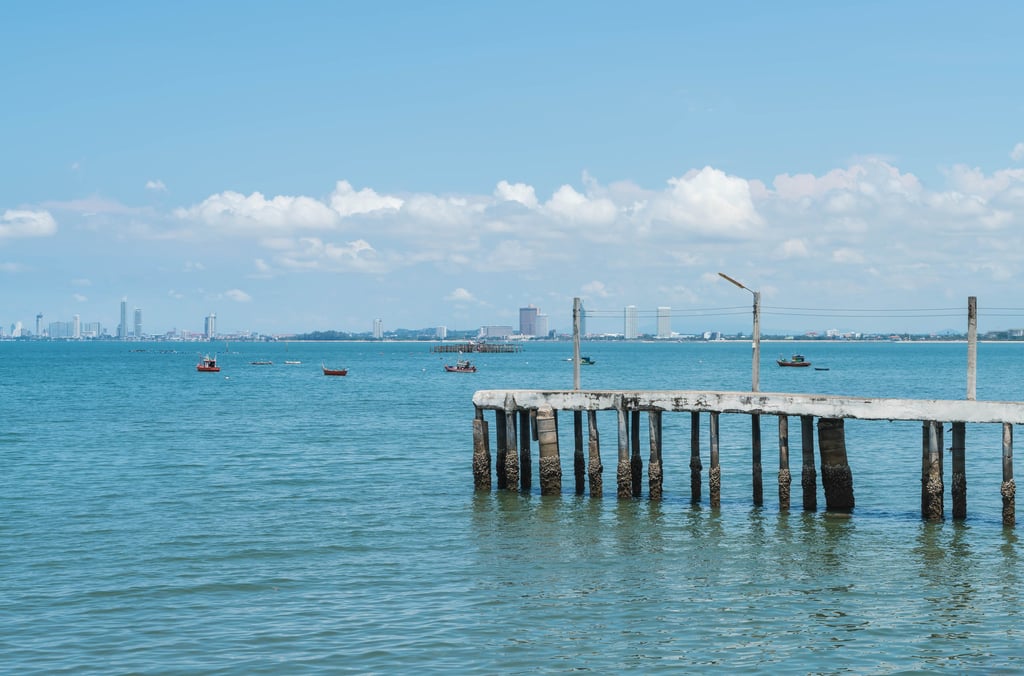Get a Seawall Permit in Fort Lauderdale: Full Process Guide
Learn how to get a seawall permit in Fort Lauderdale. Follow the steps, meet Broward County codes, and avoid delays. Start your seawall project with confidence today!
SEAWALL INSPECTION
8/19/20254 min read


Permitting Process for Building or Replacing a Seawall in Broward County
If you're a waterfront property owner in Fort Lauderdale or anywhere in Broward County, protecting your land from erosion, storm surge, and rising tides is essential. Seawalls play a crucial role in this defense—but before you build or replace one, you need the right permits.
Understanding how to get a seawall permit in Fort Lauderdale is key to avoiding project delays, fines, or forced removals. This guide breaks down the entire process, from documentation and cost estimates to environmental compliance and timelines under Broward County codes.
Why Permits Matter for Seawalls
Seawalls are not simple backyard improvements. They’re engineered structures that alter natural water flow and affect both your property and neighboring ecosystems. That’s why federal, state, and local regulations govern there seawall design and construction.
A properly permitted seawall ensures:
Compliance with Broward County codes
Structural safety
Legal protection from enforcement actions
Environmental responsibility
Attempting to build or replace a seawall without approval can lead to stop-work orders, costly redesigns, or even full removal.
Step-by-Step Guide: How to Get a Seawall Permit in Fort Lauderdale
1. Determine the Type of Work
Start by identifying whether you're:
Building a new seawall
Repairing or reinforcing an existing one
Fully replacing an old seawall
Different scopes of work require different levels of review. Replacement projects may need more environmental documentation than minor repairs.
2. Review Fort Lauderdale Coastal Regulation Requirements
Fort Lauderdale, as part of Broward County, enforces coastal construction and marine structure regulations that include:
Setback rules
Height limits for seawalls
Minimum elevation requirements
Restrictions in environmentally sensitive areas (like mangroves)
Also, recent updates due to sea level rise require new seawalls to meet higher elevation thresholds. Consult the city’s Unified Land Development Regulations (ULDR) for specifics.
3. Contact a Licensed Marine Contractor or Engineer
Before gathering documents, hire a professional who is experienced in marine construction and local permitting. They’ll provide:
Site evaluation
Engineering plans
Support for the application process
Budget guidance
This expert can help prevent rejections due to incomplete or noncompliant designs.
4. Prepare the Documentation Checklist
Gathering the right paperwork is a critical step. Your application packet typically includes:
Site plan (signed and sealed by a licensed engineer)
Structural drawings and calculations
Survey of property and mean high-water line
Environmental assessments, if needed
Notarized owner’s consent (if applicant is not the owner)
Photographs of current site conditions
Permit application form
Contractor license and insurance documentation
All submitted documents should be clear, professional, and compliant with Broward County codes to avoid processing delays.
5. Submit Your Application to the Appropriate Agencies
In Broward County, your seawall permit may need approval from multiple levels of government, depending on your location:
A. City of Fort Lauderdale
Submit the core building permit application through the permits system. This includes your engineering plans, site survey, and coastal structure details.
B. Broward County Environmental Protection Division (EPD)
If your project affects coastal wetlands, vegetation, or surface water flow, you'll need a separate review from this agency.
C. Florida Department of Environmental Protection (FDEP)
State approval is required if your project:
Affects navigable waters
Involves significant structural changes
Requires a sovereign submerged lands lease
D. U.S. Army Corps of Engineers
This federal agency steps in if the work affects wetlands, waterways, or endangered species habitats.
6. Wait for the Approval Timeline
Approval timelines vary depending on the complexity of the project and how many agencies are involved. Here’s a general idea:
Agency & Estimated Time
City of Fort Lauderdale – 4–6 weeks
Broward County EPD – 2–4 weeks
Florida DEP – 30–90 days
U.S. Army Corps (if needed) – 90–120 days or more
Keeping your documents organized and complete can shorten the process. Most delays happen due to missing paperwork or engineering corrections.
7. Comply With Environmental Regulations
Environmental compliance is crucial when altering coastal areas. Fort Lauderdale and Broward County require that you:
Avoid impacts to mangroves and seagrass beds
Install turbidity barriers during construction
Preserve natural drainage patterns
Use eco-friendly construction materials when possible
If endangered species are present, such as manatees, you may be required to implement specific protective measures.
8. Schedule Inspections
After your permit is issued and construction begins, the city will require progress inspections and a final review to close the permit. These include:
Seawall footer inspection
Reinforcement check
Final elevation measurement
Environmental compliance inspection
A failed inspection can lead to delays or even rework, so ensure your contractor adheres to the approved plan.
Additional Considerations
Permitting for Shared Seawalls
If your property shares a seawall with a neighbor, both parties may need to co-apply or provide written consent. Shared seawall repairs or replacements should also include a legal maintenance agreement for clarity.
Hurricane & Seasonal Timing
While you can apply for a permit year-round, hurricane season (June–November) may affect contractor availability and lead to longer approval timelines due to increased demand. Plan accordingly if your property is at risk during storm surge events.
Repairs vs. Replacement
Minor repairs like patching or sealing may qualify for an expedited permit or even a permit exemption. However, anything involving structural changes or excavation usually requires full review. Always check with city officials to avoid compliance issues.
Water seeping through cracks or seams
Inadequate backfill compaction
Underground water channels forming after heavy rain
Ignoring these signs can lead to dangerous soil instability and increased damage with every passing tide or storm surge.
Summary: Your Roadmap to a Legal, Compliant Seawall
Navigating the process of how to get a seawall permit in Fort Lauderdale may seem overwhelming, but with the right preparation and professional support, it becomes manageable. Here’s a final recap:
Determine your scope of work
Understand city and county regulations
Hire a licensed marine contractor or engineer
Compile your documentation checklist
Submit to all required agencies
Track your approval timeline
Follow environmental compliance guidelines
Budget for permitting cost estimates
Schedule and pass final inspections
A well-executed permitting process protects your property, the local environment, and your financial investment.
FAQ’s
1. Can I replace my seawall without a permit in Fort Lauderdale?
No. Any structural work on a seawall, including replacement, requires a building permit and possibly environmental review. Unpermitted work may result in fines.
2. How long does it take to get a seawall permit in Broward County?
It can take anywhere from 4 weeks to several months, depending on project complexity, required reviews, and agency involvement.
3. What happens if my seawall project impacts protected wetlands?
You’ll need an environmental review and possibly mitigation plans or state/federal agency approvals before proceeding.
4. Are there elevation requirements for new seawalls?
Yes. Due to sea level rise, new seawalls in Fort Lauderdale must meet or exceed the city's minimum elevation standard, often around 5 feet NAVD.
5. Who should I contact first for help with the permit?
Start with a licensed marine contractor or engineer familiar with local regulations. They’ll help design your project and manage permit applications.
Search
Is your seawall secure?
Don't wait for a small problem to become a disaster. Get a professional evaluation.
Innovation
Renovating seawalls with modern technology and materials.
Quality
Strength
© 2024. All rights reserved.
